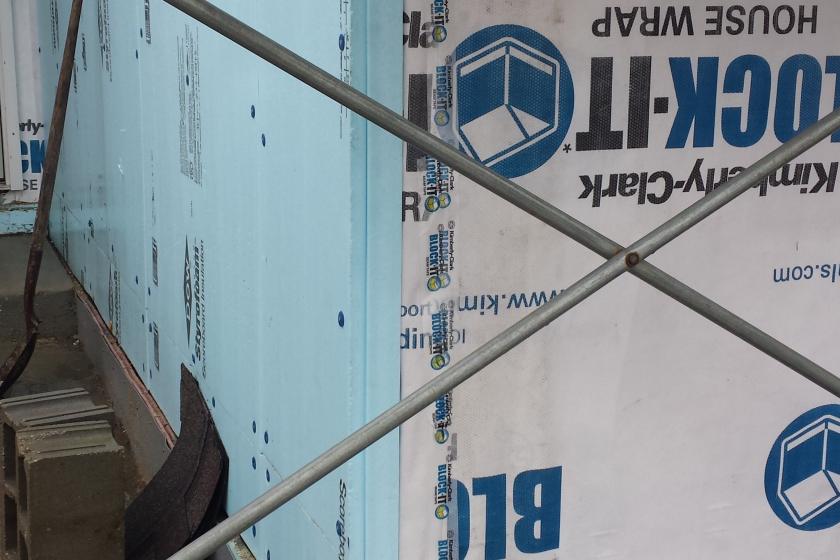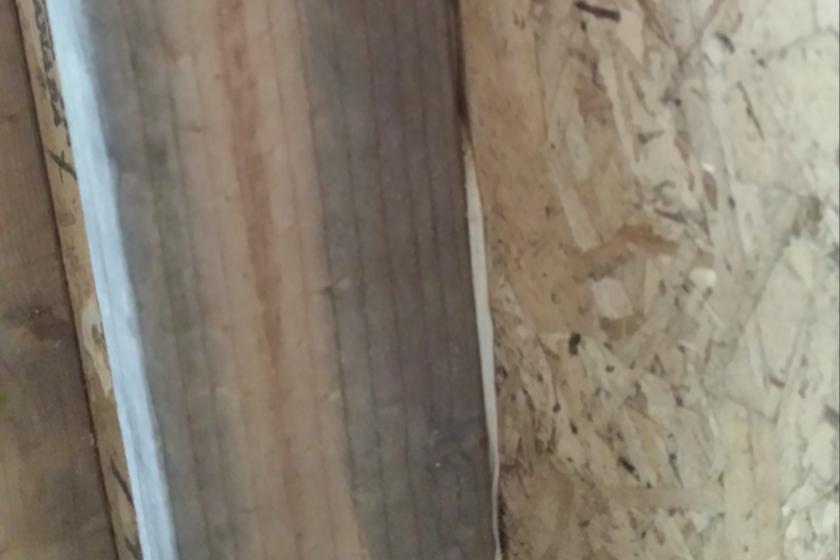“The energy efficiency starts below ground on this split-level home with 4 inches of foam insulation under the concrete floor and insulated concrete form (ICF) foundation walls above”, said Wimmer. Both provide an insulation value in the R20s, and for comparison, the current building code requires no insulation below the slab and only R15 for foundation walls. The higher the R value the stronger the insulating power. Wimmer then pointed out that the exterior walls were wrapped with three inches of foam board applied to stop 'thermal bridging'.
“Studs in a wall conduct heat and create a bridge which reduces the insulation value of the whole wall, but a solid wrap of foam breaks the bridge.” The Habitat home’s walls will come in a little over R26, exceeding the code R21 value.
Wimmer has been building homes for Habitat going on 14 years, but in the last few became obsessed with energy efficiency. He’s studied up with resources from the University of Minnesota’s Cold Climate Housing Program, and the Building Science Corporation’s principles. He has been putting what he’s learned into practice making each of the last four homes Two Rivers Habitat has built progressively higher performing.
Wimmer seems to have found the perfect collaborator in Lou Behrens who began to volunteer at Habitat a couple of years ago. Lou is a retired commercial energy efficiency consultant.
Lou described the air-tight framing techniques used in the home, which they hope will reduce the air infiltration to less than 1/3 of what is allowed by code. Gaps that allow air to leak in or out of the average home can increase energy costs by 30% and also cause moisture problems. In the Rochester Habitat home, the sheathing was glued to the studs so there were no gaps, seams in the sheathing were glued and blocked, any remaining gaps were caulked, seams in the vapor barrier were taped, and even the ductwork had an aerosol based sealant applied.
“We recently acquired blower door equipment and will be able to test the air-changes per hour several times as the construction progresses, in order to correct any issues before the finish work”, said Behrens.



